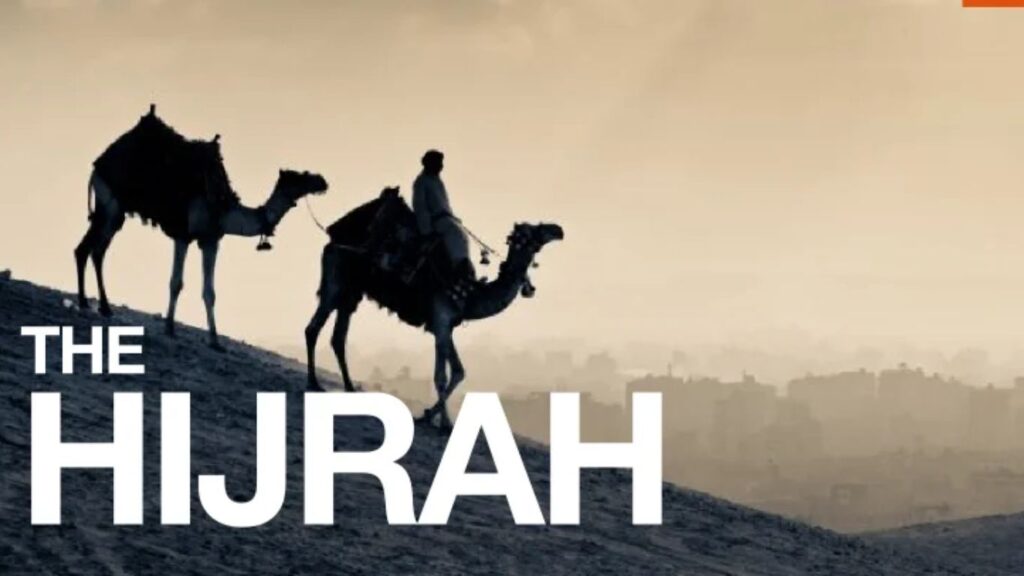The Story of Hijrah: Migration and Sacrifice
The Story of Hijrah is one of the most important events in Islamic history. It was not just a physical migration from one city to another but also a spiritual journey filled with lessons of faith, sacrifice, and reliance on Allah. This migration marked the beginning of the Islamic calendar and laid the foundation for the growth of the Muslim Ummah.
In this article, we will explore the background of the Story of Hijrah, the challenges faced by the Prophet Muhammad ﷺ and his companions, and the timeless lessons we can learn today.
The Background
Before the Story of Hijrah, Prophet Muhammad ﷺ had spent 13 years in Makkah calling people to the message of Islam. Despite his patience, kindness, and the truth of his message, many of the Quraysh leaders opposed him fiercely. Muslims faced mockery, torture, and even boycotts. Some were killed simply for saying “La ilaha illa Allah.”
When the persecution became unbearable, the Prophet ﷺ allowed some Muslims to migrate to Abyssinia, where a just Christian king protected them. Yet, the ultimate turning point came when people from Yathrib (later called Madinah) accepted Islam and invited the Prophet ﷺ to lead their community. This was the seed of what became the Story of Hijrah.

The Command to Migrate
The Quraysh realized that Islam was spreading despite their efforts. Out of desperation, they plotted to assassinate Prophet Muhammad ﷺ. Allah, however, protected His Messenger. It was at this moment that the divine command for the Story of Hijrah was given: leave Makkah and migrate to Madinah.
This was no ordinary journey. It meant leaving behind family, wealth, and homes. For many Muslims, this migration was a test of loyalty to Allah over worldly comfort.
The Night of Migration
The Story of Hijrah highlights the bravery and faith of the Prophet ﷺ. On the night the Quraysh planned to kill him, he left Ali ibn Abi Talib (RA) in his bed as a decoy, while he and Abu Bakr (RA) slipped away under the cover of night.
Their journey was not easy. They hid in the Cave of Thawr for three days as the Quraysh searched everywhere. At one point, enemies stood right outside the cave. Abu Bakr (RA) was filled with fear, not for himself but for the Prophet ﷺ. Yet, the Prophet ﷺ reassured him:
“Do not grieve; indeed Allah is with us.” (Qur’an 9:40)
This moment symbolizes ultimate trust in Allah.
Arrival in Madinah
When Prophet Muhammad ﷺ and Abu Bakr (RA) finally reached Madinah, they were welcomed with joy and love. The people of Madinah (the Ansar) opened their homes and hearts to the migrants (the Muhajirun). This bond of brotherhood, born out of the Story of Hijrah, became the foundation of the first Islamic society.
The Prophet ﷺ established the first mosque in Quba, built Masjid an-Nabawi, and drafted the Constitution of Madinah, which created unity between Muslims and non-Muslims.
Lessons from the Story of Hijrah
The Story of Hijrah carries timeless lessons that are relevant for every Muslim today:
1. Faith Over Fear
The Prophet ﷺ and his companions showed that when we trust Allah, no fear can overwhelm us.
2. Sacrifice for the Sake of Allah
Muslims left behind their wealth and possessions for Islam. Today, we may not be asked to migrate physically, but this story teaches us to prioritize deen over dunya.
3. Brotherhood and Unity
The Muhajirun and Ansar became brothers and sisters in faith, sharing everything selflessly. It is a model for Muslim communities today—to support one another and put unity above division.
4. Strategic Planning and Patience
The Prophet ﷺ didn’t rush blindly. He planned wisely, took precautions, and relied on Allah. The Story of Hijrah shows us the balance between effort and tawakkul.
5. Hope in Times of Hardship
Even at the darkest moments, the Prophet ﷺ never lost hope. This migration reminds us that with every difficulty comes ease, and Allah’s help is always near.
The Significance of Hijrah Today
The Story of Hijrah is not just a historical tale—it is a spiritual journey that we can apply in our lives. Every Muslim faces moments where they must make a “hijrah,” whether it’s leaving behind sins, bad habits, or toxic environments for the sake of Allah.
Hijrah is about moving from darkness to light, from despair to hope, from disobedience to obedience. In this sense, the Story of Hijrah continues in the life of every believer who chooses Allah over worldly desires.
Conclusion
The Story of Hijrah: Migration and Sacrifice is a cornerstone of Islamic history. It teaches us courage, sacrifice, unity, and reliance on Allah. The journey of the Prophet ﷺ and his companions was not only about moving from Makkah to Madinah—it was about moving humanity towards a life guided by divine values.
As we reflect on the Story of Hijrah, let us ask ourselves: what “hijrah” do we need to make in our lives? Perhaps it’s migrating away from laziness to discipline, from neglecting prayer to embracing it, or from despair to hope in Allah.
May Allah allow us to live the spirit of Hijrah every day.
You may also like Quran Journaling – Practical Ways to Reflect on Verses – 2025

